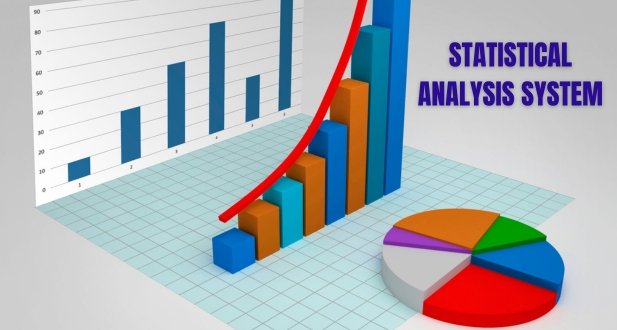What is meant by SAS?
SAS (Statistical Analysis System)
software suite developed by SAS Institute Inc. that allows users to perform data analysis, management, and visualization. It is widely used in the fields of statistics, economics, social sciences, and business. SAS can be used on various platforms, including Windows, Unix, and Linux. The software offers a comprehensive range of statistical functions, data management tools, and reporting capabilities.
One of the main features of SAS is its ability to handle large amounts of data. SAS can work with datasets containing millions of records and thousands of variables. It offers a wide range of data management functions, including data cleaning, merging, and manipulation. SAS can also handle data in various formats, such as CSV, Excel, and SQL databases.
SAS also provides a wide range of statistical analysis functions. These include descriptive statistics, regression analysis, ANOVA, cluster analysis, and time series analysis. SAS also offers advanced statistical analysis functions such as structural equation modeling, multilevel modeling, and survival analysis. SAS also provides machine learning and artificial intelligence capabilities, such as neural networks, decision trees, and random forests.
SAS also has a powerful reporting and visualization tool called SAS Visual Analytics. This tool allows users to create interactive dashboards, reports, and graphs. SAS Visual Analytics offers drag-and-drop capabilities, which allow users to easily create visualizations without having to write any code. The tool also provides the ability to drill down into the data and explore it in more detail.
SAS is a comprehensive software suite that offers powerful data management, statistical analysis, and reporting capabilities. Its ability to handle large amounts of data, advanced statistical analysis functions, and easy-to-use reporting and visualization tools make it a popular choice among researchers, businesses, and organizations.
Why SAS is used
SAS (Statistical Analysis System) is a powerful and comprehensive software suite that is widely used in data analysis and management, business intelligence, and statistical modeling. It has been in existence for over four decades and is widely regarded as one of the best statistical software packages in the industry. There are several reasons why SAS is preferred by many data analysts and researchers.
First, SAS is a reliable and robust statistical software package that is designed to handle large datasets. It can handle complex data manipulation tasks, including merging, sorting, and filtering. The software is also optimized for handling big data, which makes it ideal for analyzing data from large organizations and companies. SAS has the ability to read and write data in many different formats, including Excel, CSV, and databases.
Second, SAS is widely used in the industry and has an extensive user base. This means that there is a large community of SAS users, and therefore, there is a wealth of resources and support available for users. There are many online resources, such as user groups, blogs, and forums, where SAS users can share information and get help with their data analysis projects.
Third, SAS has a wide range of statistical analysis capabilities. It includes a wide range of statistical procedures, such as regression analysis, analysis of variance (ANOVA), and logistic regression. SAS also has advanced capabilities for predictive modeling, including decision trees, neural networks, and time series analysis.
Fourth, SAS is highly customizable, and users can write their own programs and scripts to extend the functionality of the software. SAS also supports many programming languages, including SAS, SQL, and Python, which allows users to write programs in their language of choice.
SAS is known for its security and data integrity features. SAS provides a secure environment for data storage and analysis, which is critical for businesses and organizations that handle sensitive information. SAS also provides robust data quality and data cleansing capabilities to ensure that data is accurate and consistent.
SAS is a powerful and comprehensive statistical software package that is widely used in data analysis and management. It is a reliable and robust platform that can handle large datasets, and it has an extensive user base with a wealth of resources and support. SAS offers a wide range of statistical analysis capabilities, is highly customizable, and has robust security and data integrity features. These features make SAS an ideal choice for data analysts and researchers in various fields.
SAS tools
SAS Enterprise Guide:
This is a graphical user interface (GUI) that allows users to work with SAS in a point-and-click environment. It is designed for those who are new to SAS, as well as those who prefer to work with a GUI rather than a command-line interface. Users can use this tool to access and analyze data, create reports and visualizations, and automate routine tasks.
SAS Studio:
This is another GUI that allows users to access SAS functionality via a web browser. It is particularly useful for those who work in organizations that have strict security policies, as it enables users to access SAS without requiring them to install any software on their local machines.
SAS Visual Analytics:
This is a data visualization tool that enables users to create interactive dashboards and reports that can be shared with others. It is particularly useful for those who need to communicate insights to stakeholders who may not be familiar with SAS or statistical analysis.
SAS Data Integration Studio:
This is a tool for building and managing data integration workflows. It enables users to extract data from various sources, transform it into the desired format, and load it into a target system. It is particularly useful for those who need to work with large and complex data sets.
SAS/STAT:
This is a module that provides a wide range of statistical analysis tools. It includes procedures for regression analysis, time series analysis, analysis of variance, and many other statistical techniques. It is particularly useful for those who need to perform advanced statistical analysis.
SAS/ACCESS:
This module enables users to access data from a wide range of external data sources, including databases, spreadsheets, and other software applications. It is particularly useful for those who need to integrate data from multiple sources.
SAS Macro Language:
This is a programming language that enables users to automate routine tasks and perform complex data manipulation tasks. It is particularly useful for those who need to work with large and complex data sets and want to automate routine tasks.
Main uses of SAS
SAS is a powerful statistical software suite used for data management, analysis, and reporting. Here are some of the ways SAS is used in various industries:
Healthcare: SAS is used in healthcare to improve patient outcomes, manage costs, and ensure regulatory compliance. SAS can analyze patient data to identify patterns and predict disease risk, which can help healthcare professionals make more informed decisions. SAS is also used to monitor quality of care, identify fraud, and track public health trends.
Finance: In finance, SAS is used for risk management, fraud detection, and regulatory compliance. SAS can analyze large datasets to identify potential fraudulent activity and calculate risk exposure. SAS is also used to comply with regulatory requirements such as Basel III and Solvency II.
Retail: SAS is used in the retail industry to analyze customer data and improve sales and marketing efforts. Retailers use SAS to identify buying patterns, predict customer behavior, and personalize marketing messages. SAS is also used to manage inventory, optimize pricing, and improve supply chain efficiency.
Government: SAS is used in government to analyze and manage data related to public policy, national security, and public health. SAS can help government agencies identify trends, forecast outcomes, and make more informed decisions. SAS is also used to ensure regulatory compliance and detect fraud and waste.
Education: SAS is used in education to manage student data, analyze student performance, and improve educational outcomes. SAS can be used to predict student success, identify at-risk students, and develop personalized learning plans. SAS is also used to manage financial aid, comply with regulatory requirements, and evaluate educational programs.
Marketing: SAS is used in marketing to analyze customer data, predict customer behavior, and develop personalized marketing campaigns. Marketers use SAS to identify patterns in customer behavior, forecast outcomes, and optimize marketing spend. SAS is also used to manage customer relationships and analyze the effectiveness of marketing campaigns.
Manufacturing: SAS is used in manufacturing to optimize production processes, manage inventory, and improve supply chain efficiency. Manufacturers use SAS to analyze data from sensors and other sources to identify trends, predict failures, and optimize production schedules. SAS is also used to manage quality control and ensure regulatory compliance.
Benefits of SAS
Data Management: One of the main benefits of SAS is its ability to handle large and complex data sets. With SAS, users can easily read, write, manipulate, and analyze data from various sources. SAS allows users to clean and transform data easily, create new variables, and perform data validation to ensure accuracy and consistency.
Statistical Analysis: SAS provides a broad range of statistical analysis tools for both descriptive and inferential statistics. Users can perform univariate and multivariate analysis, hypothesis testing, regression analysis, and time-series analysis. SAS also provides advanced analytics such as machine learning and artificial intelligence for predictive modeling, text analytics, and optimization.
Visualization: SAS provides a variety of graphical tools for data visualization. SAS can produce graphs, charts, and plots that are customizable, clear, and informative. Users can create complex visualizations such as heat maps, treemaps, and network diagrams. SAS graphics are easily integrated into reports, presentations, and dashboards.
Integration: SAS is highly integrable with other software tools and systems. SAS can connect to various data sources such as databases, spreadsheets, and cloud-based storage. SAS can also be integrated with other programming languages such as Python and R. SAS can be used in conjunction with other business intelligence tools such as Tableau, Power BI, and QlikView.
Security: SAS provides advanced security measures to ensure the confidentiality, integrity, and availability of data. SAS has built-in authentication, authorization, and encryption features. SAS also provides audit trails and logs to track data access and usage. SAS can be deployed on-premises or on the cloud, providing flexible security options for different organizational needs.
Support and Community: SAS provides a comprehensive support system for its users. SAS provides online resources such as documentation, knowledge bases, and forums. SAS also offers technical support, training, and certification programs. SAS also has a strong user community that shares knowledge, best practices, and solutions.
Conclusion
In conclusion, SAS is a highly respected and valuable tool in the data analysis field. Its versatility, speed, and reliability make it a popular choice for professionals who work with large and complex data sets. Whether you’re looking to analyze data, build predictive models, or perform statistical analysis, SAS has the tools and resources to help you achieve your goals. Overall, SAS continues to be a leading software solution for businesses and organizations seeking to harness the power of data to make better decisions and drive growth.
Frequently Asked Questions
SAS uses its own programming language, also called SAS. It is a data-driven language that includes a variety of statements and functions for manipulating and analyzing data.
SAS Enterprise Guide is a point-and-click interface for SAS that allows users to easily create and manage SAS programs, as well as view and interact with data.
SAS Visual Analytics is a tool for creating interactive visualizations and reports from data. It includes features such as drag-and-drop interfaces, data exploration, and dashboard creation.
SAS has built-in functions and procedures for handling missing data, including imputation and deletion. It also includes options for controlling how missing values are treated in analysis.
SAS data integration involves bringing together data from multiple sources, transforming it as necessary, and preparing it for analysis. This process can be automated using SAS data integration tools.
SAS data mining refers to the process of using statistical and machine learning techniques to discover patterns and relationships in data. SAS includes a wide range of data mining tools and procedures.
SAS is typically licensed on a per-user basis, with different levels of functionality available depending on the license purchased. It can be installed on individual computers or on servers for use by multiple users.




